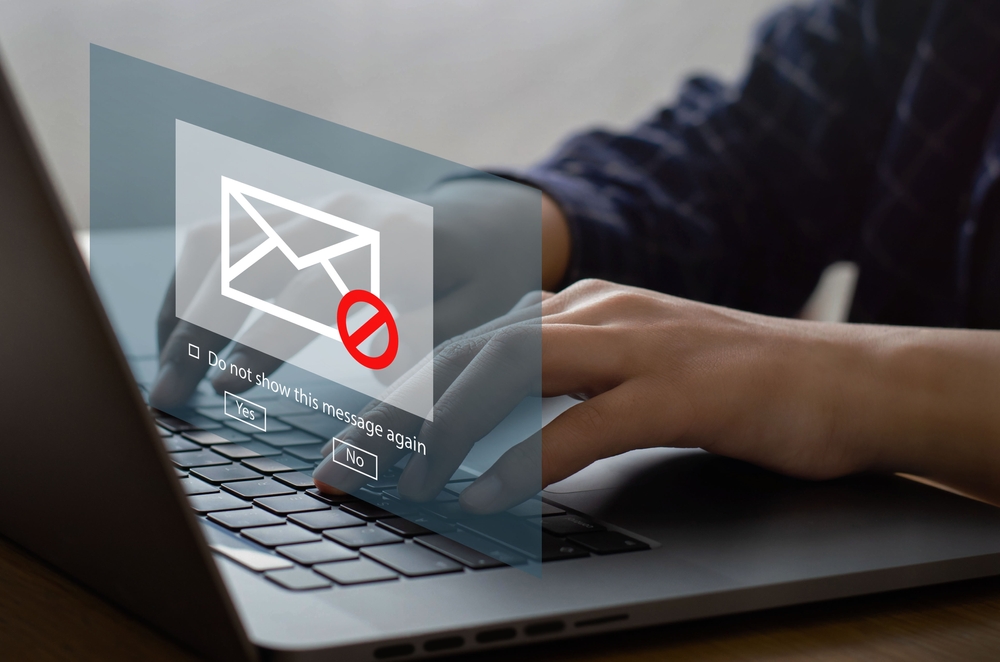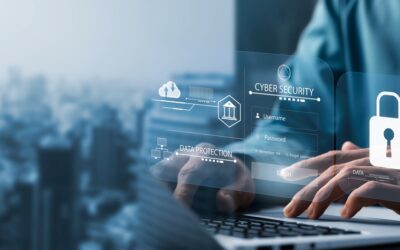Cybersecurity is no longer an optional safeguard; it is an essential aspect of any professional practice, particularly in accounting. The sensitivity and confidentiality of financial data necessitate stringent protective measures to thwart potential cyber threats. As an accountant, your clients entrust you with their most private financial information. A breach not only risks financial loss but can irreparably damage your reputation. Therefore, adopting top-tier cybersecurity measures is paramount.
1. Understand the Cybersecurity Landscape
Before diving into specific measures, it’s crucial to have a fundamental understanding of the cybersecurity landscape. Cyber threats can range from phishing attacks, ransomware, and malware to more sophisticated breaches like advanced persistent threats (APTs). Knowing the various types of cyber threats can help accountants better prepare and defend against them.
2. Conduct Regular Risk Assessments
Regular risk assessments are critical in identifying vulnerabilities within your systems. By evaluating your current cybersecurity posture, you can pinpoint areas that need improvement. This process involves:
- Identifying assets: Determine what data and systems need protection.
- Evaluating threats: Understand potential threats to these assets.
- Assessing vulnerabilities: Identify weaknesses that could be exploited.
- Determining impacts: Analyze the potential impact of different threats on your business.
- Prioritizing risks: Rank the risks to focus on the most critical areas first.
3. Implement Strong Access Controls
Access controls are the first line of defense against unauthorized access. Accountants should implement strong access control measures such as:
- Multi-Factor Authentication (MFA): Requiring multiple forms of verification before granting access.
- Role-Based Access Control (RBAC): Assigning access based on the user’s role within the organization, ensuring that only authorized personnel have access to sensitive information.
- Regular Audits: Periodically reviewing access logs to detect any unusual or unauthorized access attempts.
4. Encrypt Sensitive Data
Data encryption is a vital measure to protect sensitive information from being accessed by unauthorized individuals. This includes both data at rest (stored data) and data in transit (data being transferred):
- Encryption Standards: Utilize strong encryption standards such as AES-256.
- Data Encryption Tools: Use reliable tools and software for encryption.
- Secure Communication Channels: Ensure that all communication channels, such as emails and file transfers, are encrypted.
5. Regular Software Updates and Patch Management
Keeping software up-to-date is crucial in protecting against vulnerabilities that cybercriminals can exploit. Implement a robust patch management process to ensure that all software, including operating systems, applications, and firmware, are regularly updated with the latest security patches.
6. Deploy Firewalls and Intrusion Detection Systems (IDS)
Firewalls and IDS are essential components of network security:
- Firewalls: Act as a barrier between your internal network and external threats, blocking unauthorized access while allowing legitimate traffic.
- Intrusion Detection Systems: Monitor network traffic for suspicious activity and alert administrators to potential threats. Advanced IDS can also respond automatically to certain types of attacks.
7. Employee Training and Awareness
Human error is often the weakest link in cybersecurity. Regular training and awareness programs are vital to educate employees about:
- Recognizing Phishing Attacks: Identifying suspicious emails and links.
- Safe Internet Practices: Understanding the importance of secure browsing and downloading.
- Reporting Incidents: Knowing how to report suspected security incidents promptly.
8. Implement a Data Backup and Recovery Plan
A comprehensive data backup and recovery plan ensures that you can restore critical information in the event of a cyberattack or data loss. This plan should include:
- Regular Backups: Automating regular backups to secure locations.
- Testing Recovery Procedures: Periodically testing the recovery process to ensure data can be restored quickly and completely.
- Offsite Storage: Storing backups in a secure, offsite location to protect against physical disasters.
9. Secure Physical Devices
Cybersecurity isn’t just about digital measures; physical security is equally important. Ensure that all devices used in your practice are secured:
- Device Encryption: Encrypt data stored on physical devices.
- Access Controls: Use passwords, biometrics, and other access controls on devices.
- Physical Security: Store devices in secure locations and use locks or security cables where necessary.
10. Adopt a Zero-Trust Security Model
The zero-trust security model operates on the principle of “never trust, always verify.” This approach requires strict verification for every person and device trying to access resources on your network, regardless of whether they are inside or outside your network perimeter.
11. Monitor and Respond to Threats in Real-Time
Continuous monitoring and real-time threat response are crucial for mitigating cyber risks. Utilize Security Information and Event Management (SIEM) systems to:
- Aggregate and Analyze Data: Collect and analyze data from various sources to detect threats.
- Automated Alerts: Set up automated alerts for suspicious activities.
- Incident Response Plans: Develop and regularly update incident response plans to ensure quick and effective responses to security breaches.
12. Use Secure Cloud Services
Many accountants use cloud services for data storage and management. Ensure that these services are secure by:
- Choosing Reputable Providers: Select cloud service providers with robust security measures and compliance certifications.
- Encrypting Cloud Data: Ensure that data stored in the cloud is encrypted.
- Access Controls: Implement strong access controls for cloud services.
13. Maintain Compliance with Regulations
Accountants must comply with various regulations and standards that mandate specific cybersecurity practices. These may include:
- General Data Protection Regulation (GDPR): For firms handling the personal data of EU citizens.
- Health Insurance Portability and Accountability Act (HIPAA): For those dealing with healthcare-related information.
- Sarbanes-Oxley Act (SOX): For publicly traded companies in the United States.
Regularly review and update your practices to remain compliant with these and other relevant regulations.
14. Engage Cybersecurity Experts
Sometimes, the complexity of cybersecurity necessitates professional assistance. Engaging cybersecurity experts can provide:
- Advanced Threat Detection: Access to specialized tools and expertise.
- Customized Security Solutions: Tailored solutions that fit the specific needs of your practice.
- Ongoing Support and Maintenance: Continuous monitoring and updating of security measures.
15. Develop a Culture of Cybersecurity
Finally, fostering a culture of cybersecurity within your practice is essential. This involves:
- Leadership Commitment: Ensure that top management prioritizes and invests in cybersecurity.
- Continuous Improvement: Regularly update and improve cybersecurity measures.
- Employee Engagement: Encourage all employees to take an active role in maintaining cybersecurity.
16. Utilize Advanced Endpoint Protection
Endpoints, such as laptops, desktops, and mobile devices, are common entry points for cyber threats. Employing advanced endpoint protection solutions can help mitigate risks associated with these devices. Such solutions should include:
- Antivirus and Anti-Malware Software: Regularly updated to detect and prevent infections.
- Endpoint Detection and Response (EDR): Provides real-time monitoring and automated response capabilities.
- Mobile Device Management (MDM): Ensures security policies are enforced across all mobile devices used within the practice.
17. Secure Email Communication
Email remains a primary vector for cyberattacks, including phishing and malware distribution. To secure email communication, consider the following measures:
- Spam Filters: Implement advanced spam filters to block malicious emails.
- Email Encryption: Use end-to-end encryption to protect the content of emails.
- Security Awareness Training: Educate employees on recognizing and handling suspicious emails.
18. Implement Network Segmentation
Network segmentation involves dividing a network into smaller, isolated segments. This limits the spread of cyber threats and restricts access to sensitive data. Benefits include:
- Improved Security: Limits the impact of a breach on the entire network.
- Enhanced Performance: Reduces network congestion by isolating traffic.
- Simplified Compliance: Easier to apply and monitor security controls within segments.
19. Adopt Secure File Sharing Practices
File sharing is essential in accounting but can pose significant security risks if not managed properly. Adopt secure file sharing practices such as:
- Secure File Transfer Protocols (SFTP): Use SFTP instead of traditional FTP to ensure data encryption during transfer.
- Cloud-Based File Sharing Services: Choose services with strong security measures and encryption.
- Access Controls: Restrict file sharing permissions to authorized users only.
20. Leverage Artificial Intelligence (AI) and Machine Learning (ML)
AI and ML can enhance cybersecurity by detecting anomalies and predicting potential threats. Incorporating these technologies can provide:
- Advanced Threat Detection: Identifies patterns and behaviors indicative of cyber threats.
- Automated Responses: AI can initiate automatic responses to certain threats, reducing response time.
- Continuous Improvement: ML algorithms learn and adapt over time, improving their effectiveness.
21. Create an Incident Response Team (IRT)
Having a dedicated Incident Response Team ensures that you are prepared to handle cyber incidents swiftly and effectively. The IRT should:
- Develop Incident Response Plans: Outline procedures for detecting, responding to, and recovering from cyber incidents.
- Conduct Regular Drills: Simulate cyberattacks to test and refine response strategies.
- Collaborate with External Experts: Partner with cybersecurity firms for additional support and expertise.
22. Utilize Virtual Private Networks (VPNs)
VPNs provide a secure connection for remote access, encrypting data transmitted over the internet. Benefits of using VPNs include:
- Enhanced Security: Protects data from interception and unauthorized access.
- Remote Work Enablement: Facilitates secure access to network resources for remote employees.
- Privacy Protection: Masks IP addresses, providing anonymity and protecting user privacy.
23. Regularly Review and Update Security Policies
Cybersecurity policies should be living documents that evolve with emerging threats and technological advancements. Regularly review and update these policies to:
- Reflect Current Threats: Ensure policies address the latest cyber threats and vulnerabilities.
- Incorporate New Technologies: Update policies to include security measures for new technologies being adopted.
- Align with Compliance Requirements: Keep policies in line with current regulatory standards and best practices.
24. Foster Third-Party Risk Management
Accountants often work with third-party vendors and service providers, which can introduce additional cybersecurity risks. Implement third-party risk management strategies such as:
- Vendor Assessments: Conduct thorough security assessments of potential vendors.
- Contractual Security Requirements: Include security obligations in contracts with third parties.
- Continuous Monitoring: Regularly review and monitor third-party security practices.
25. Embrace Secure Software Development Practices
For firms developing custom software or using in-house applications, secure software development practices are crucial. Key practices include:
- Secure Coding Standards: Follow industry best practices and standards for secure coding.
- Regular Code Reviews: Conduct thorough reviews and testing to identify and fix vulnerabilities.
- Application Security Testing: Use tools like static and dynamic application security testing (SAST and DAST) to detect security issues.
26. Implement Data Loss Prevention (DLP) Solutions
DLP solutions help prevent unauthorized access and transmission of sensitive data. These solutions can:
- Monitor Data Movement: Track data transfers and flag unusual activities.
- Enforce Security Policies: Automatically enforce policies to prevent data breaches.
- Protect Data Across Platforms: Safeguard data on endpoints, networks, and cloud environments.
27. Secure Remote Work Environments
With the rise of remote work, securing remote environments has become critical. To secure remote work:
- Strong Authentication: Require MFA for remote access.
- Secure Home Networks: Educate employees on securing their home networks.
- Remote Device Management: Use MDM solutions to manage and secure remote devices.
28. Perform Regular Penetration Testing
Penetration testing, or ethical hacking, involves simulating cyberattacks to identify and fix vulnerabilities. Regular penetration testing helps:
- Identify Weaknesses: Detect vulnerabilities before cybercriminals can exploit them.
- Improve Security Posture: Strengthen defenses based on test results.
- Meet Compliance Requirements: Satisfy regulatory and industry standards for security testing.
29. Utilize Blockchain for Secure Transactions
Blockchain technology offers enhanced security for financial transactions by providing a decentralized, immutable ledger. Benefits include:
- Transparency: Ensures all transactions are visible and verifiable.
- Tamper-Proof: Prevents unauthorized changes to transaction records.
- Secure Smart Contracts: Automates and secures contract execution without intermediaries.
30. Engage in Cybersecurity Collaborations
Collaborating with industry peers and cybersecurity organizations can enhance your security posture. Benefits include:
- Threat Intelligence Sharing: Access to shared threat intelligence and insights.
- Collaborative Defense: Working together to develop stronger defenses against common threats.
- Access to Resources: Utilize resources and tools provided by cybersecurity alliances.
31. Implement Identity and Access Management (IAM)
IAM solutions help manage user identities and control access to systems and data. Effective IAM includes:
- Single Sign-On (SSO): Simplifies access management by allowing users to log in once to access multiple systems.
- User Provisioning and Deprovisioning: Automatically manage user access based on role changes.
- Access Reviews: Regularly review user access rights to ensure they are appropriate.
32. Establish a Cybersecurity Committee
Forming a cybersecurity committee ensures that cybersecurity receives ongoing attention and oversight. The committee should:
- Set Security Policies: Develop and enforce cybersecurity policies and procedures.
- Monitor Security Posture: Regularly review the organization’s security posture and risk assessments.
- Advise Leadership: Provide recommendations to senior management on cybersecurity strategies and investments.
33. Use Biometric Security Measures
Biometric security measures, such as fingerprint scanning and facial recognition, offer enhanced protection. Benefits include:
- Increased Accuracy: Reduces the risk of unauthorized access.
- User Convenience: Simplifies authentication processes.
- Enhanced Security: Combines with other authentication methods for multi-factor authentication.
34. Promote a Culture of Continuous Improvement
Cybersecurity is a continuous process that requires ongoing effort and improvement. Foster a culture of continuous improvement by:
- Encouraging Feedback: Solicit feedback from employees on security practices and improvements.
- Staying Informed: Keep abreast of the latest cybersecurity trends and technologies.
- Adapting to Changes: Be flexible and willing to update practices and policies as needed.
Building a Resilient Cybersecurity Framework
In today’s digital landscape, the role of cybersecurity cannot be overstated. For accountants, the stakes are particularly high, as they deal with highly sensitive financial information that can be a prime target for cybercriminals. The adoption of comprehensive cybersecurity measures is not just about protecting data; it’s about maintaining trust, ensuring compliance, and securing the future of your practice.
The measures outlined in this article—ranging from understanding the cybersecurity landscape to leveraging advanced technologies like AI and blockchain—provide a robust framework for safeguarding your accounting practice. These strategies are designed to address the multifaceted nature of cyber threats, encompassing both preventive and responsive actions.
Continuous Vigilance and Adaptation
Cybersecurity is a dynamic field. New threats emerge regularly, and cybercriminals are constantly evolving their tactics. Therefore, continuous vigilance and adaptation are crucial. Regularly updating your knowledge and cybersecurity practices ensures that you remain one step ahead of potential threats. This proactive approach can significantly reduce the risk of data breaches and other cyber incidents.
The Role of Leadership and Culture
Effective cybersecurity starts from the top. Leadership must prioritize cybersecurity and allocate the necessary resources to implement and maintain robust security measures. By fostering a culture of cybersecurity awareness and responsibility, you can ensure that all members of your practice—from top management to entry-level employees—are engaged in protecting sensitive information.
Collaboration and External Expertise
No single entity can tackle cybersecurity alone. Collaboration with industry peers, participation in cybersecurity alliances, and engaging external experts can enhance your security posture. These collaborations provide access to valuable resources, threat intelligence, and specialized skills that may not be available in-house.
Regulatory Compliance
Staying compliant with relevant regulations not only helps avoid legal repercussions but also enhances your overall security framework. Regular audits and adherence to standards like GDPR, HIPAA, and SOX ensure that your practice meets the highest security and privacy benchmarks.
Investing in Advanced Technologies
Investing in advanced cybersecurity technologies—such as AI-driven threat detection, blockchain for secure transactions, and biometric authentication—can provide significant advantages. These technologies offer sophisticated solutions to detect, prevent, and respond to cyber threats more effectively.
A Comprehensive Approach
Ultimately, a comprehensive approach to cybersecurity involves a combination of technical measures, policies, training, and continuous improvement. By integrating these elements, accountants can build a resilient cybersecurity framework that not only protects sensitive data but also supports the integrity and reputation of their practice.






